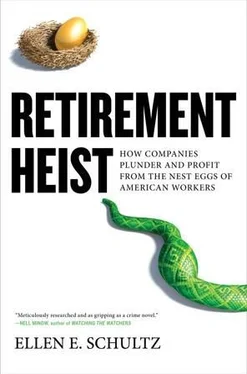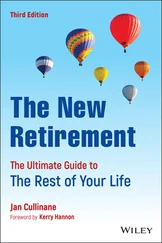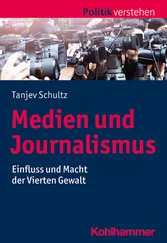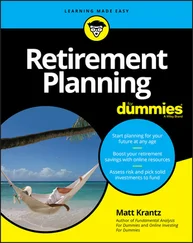But don’t expect employers to bemoan their spiraling executive obligations. In a letter to stockholders dated March 16, 2006, the chief executive of Unisys, Joseph McGrath, blamed “higher pension expense” for the loss the company had reported the previous year. This was partly true: Financial filings show that pension expenses reduced Unisys’s earnings by $104 million.
But he left out a critical detail: Most of the increase in cost was from a half-dozen supplemental pension and savings plans for top Unisys executives. The regular pension plan had actually been a benefit to the company. From 1995 to 2001, the company’s pension plans actually increased corporate earnings—by an average of $91 million a year. That was because the income on assets set aside for regular workers’ pensions more than covered all of Unisys’s pension expense, with the remainder flowing to the bottom line. In 2003, however, Unisys started to incur pension expenses, because of investment losses, falling rates, and because its executive pensions had become so costly that the gains produced by the regular pension plan were no longer enough to make up for it.
The day after McGrath’s report to shareholders, Unisys announced that it would freeze the regular employees’ pension plan to control “the level and volatility of retirement costs.” McGrath said that “we think these changes have struck the appropriate balance between controlling our pension costs and continuing to help our employees prepare for retirement.” On balance, it was good for Unisys: Freezing the regular pensions generated a quick gain of $45 million and will add a total of about $700 million to earnings over ten years.
A variety of companies froze their pensions in 2006, taking advantage of low interest rates, which had inflated their obligations. Curtailing pensions at a time when the obligations are artificially high results in a larger drop in the obligation, and bigger gains.
Even when a company postpones the effective date of the freeze, it can reduce its obligation immediately. In early 2006, IBM announced that it would freeze the pensions of about 117,000 U.S. employees starting in 2008, citing pension costs, volatility, and unpredictability. Only by drilling into its pension filings would one notice that $134 million, or a quarter of its U.S. pension expense the prior year, resulted from pensions for several thousand of its highest-paid people. The rest of IBM’s U.S. pension expense, $381 million, related to pensions for 254,000 workers and retirees. The only U.S. pensions dragging down earnings are the executive pensions, which have continued to rise. The freeze didn’t hurt CEO Sam Palmisano’s retirement: He’ll receive at least $3.2 million a year in retirement.
Now, thanks to the pension freeze, the employee pension plan no longer has any expense: In the years since the freeze was announced, the gains from curtailing benefits have added nearly $3 billion to IBM’s income.
GM also took advantage of low interest rates to lock in a bigger liability. When the automaker announced in 2006 that it would freeze the pensions of 42,000 U.S. salaried workers, it blamed its troubles on “legacy costs,” including pensions for its U.S. workers. The move wiped $1.6 billion from GM’s pension obligations.
How costly were the pensions of GM’s workers at the time? The pension covering nearly 700,000 U.S. workers and retirees had a $9 billion surplus and was adding $10 billion to its income calculations. The executive pension was another matter. The $1.4 billion in executive legacy liabilities for an unknown number of executives generates an expense that hurts GM’s bottom line each year. GM has often claimed that its U.S. pension plans add about $800 to the cost of each car made in the United States. But it doesn’t say how much of this cost is for executive legacy liabilities.
It’s possible that the widening retirement gap is just an unintended by-product of a trend to reduce benefits and enhance executive pay. But at some companies, the disparity was deliberate. In 1996, the pension committee of the board of directors of Mercantile Stores met at the exclusive Union Club in New York City to vote on some critical changes in their retirement plans. The chain of department stores in the Midwest and the South had a pension plan covering 21,000 employees and retirees. The pension plan wasn’t a burden: It had a surplus of about $200 million. The average pension of the retired cashiers and clerks was $138 a month, and employee turnover was so high that many workers never qualified for a pension anyway.
But the company was in financial trouble, and the pension plan was one place to look for relief. Benefits consultants pondered the situation and concluded that pension cuts would be appropriate. Why? Because the Mercantile pension plan was more generous than those of other retailers, the consultants said. At the same time, the consultants concluded that the executives’ pensions weren’t “competitive” with others in the industry. To resolve this supposed imbalance and bring Mercantile’s retirement benefits in line with those of its peers, the board voted to reduce the pensions of low-paid workers and boost executive pensions. Two years later, Dillard’s Inc., a Little Rock, Arkansas–based retailing chain, bought Mercantile, terminated the pension plan, and captured the surplus.
Towers Perrin, the consulting firm that helped Mercantile with these kinds of decisions, merged with Watson Wyatt in 2010. Now called Towers Watson, the global consulting firm continues to help the largest companies in the United States, Canada, the United Kingdom, the Netherlands, and Germany shrink retiree benefits and boost executive pay and pensions.
Towers Watson practices what it preaches. Its employees have a cash-balance pension plan, while top executives have a supplemental pension with all the bells and whistles that have been stripped from rank-and-file pensions, including a generous formula based on final pay, which spikes in value in the later years, and the ability to retire at sixty with full benefits. The company reimburses executives for their FICA (payroll) taxes and “grosses up” the payments (i.e., it pays the taxes on the tax payments). When top managers depart, the company uses an unusually low interest rate, 3.5 percent, to calculate their lump-sum payouts, which results in a larger payment. In fiscal 2010, the executive pension liability for the combined company stood at $627 million, 32 percent of the total pension obligation. The company also paid out $496 million in “discretionary compensation,” i.e. bonuses, of which most, or all, went to executives.
Like many public pension plans, executive liabilities have been growing quietly behind the scenes, producing a mounting obligation, much of it hidden. Even when a company owes its executives billions of dollars, it can be almost impossible to tell because of the way companies bundle all their pensions together in securities filings.
When companies mention executive pensions at all, they typically use terms that only pension-industry insiders would recognize, such as “nonqualified obligations” and “unfunded defined benefit pension plans.” Comparing the obligation and cost of executive pensions to regular ones is possible only at the few companies that actually break out the figures (like GE) or provide enough clues to enable a determined researcher to back the figures out of the totals.
Executive pensions are like public pensions in another critical way: The liabilities are often lowballed. So even if one is able to identify the current liability for executive pensions, the figure may provide an unrealistic view of what the company will ultimately pay out, for a variety of reasons, including the way they are calculated.
Читать дальше












